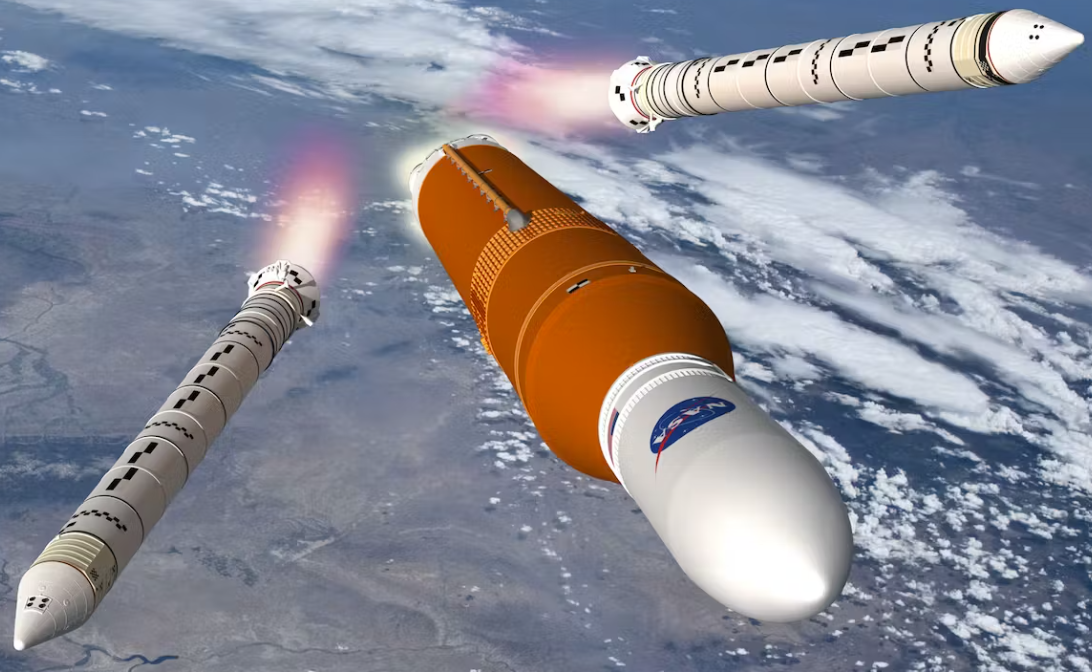In a momentous endeavor, the Artemis space program is poised to bring humanity back to the lunar surface and beyond, marking an extraordinary chapter in space exploration. Departing from a 50-year hiatus, NASA's ambitious mission, named after the Greek goddess of the Moon, Artemis, carries a profound significance as it aims to achieve what its predecessor, Apollo, left unaccomplished: putting the first woman on the Moon.
Under the leadership of Charlie Blackwell-Thompson, Nasa's first female launch director, the maiden mission, Artemis I, embarked on an unprecedented 26-day journey, orbiting the Moon in an extended retrograde orbit—a path contrary to the Moon's rotation around the Earth. This groundbreaking feat paved the way for a series of other momentous firsts.
 Jim Free, Nasa's Associate Administrator for Exploration Systems Development, expresses the program's ambition, stating, "We're venturing further into space than any human vehicle has ever gone before. With the Orion capsule, we will journey 40,000 miles (64,000km) past the Moon." During Artemis I, the Orion spacecraft, designed for crewed exploration, surpassed the record set by Apollo 13 in 1970, traveling an astounding 270,000 miles (434,500km) from Earth. While the mission featured a mannequin equipped with sensors to simulate the challenges that the real crew will face in subsequent missions, Artemis II will carry human astronauts 6,400 miles (10,299km) beyond the dark side of the Moon, venturing approximately 230,000 miles (370,150km) from Earth. Although falling short of the record set by the Apollo 13 crew at 248,655 miles (400,171km), the Artemis missions are poised to establish numerous other groundbreaking records.
Jim Free, Nasa's Associate Administrator for Exploration Systems Development, expresses the program's ambition, stating, "We're venturing further into space than any human vehicle has ever gone before. With the Orion capsule, we will journey 40,000 miles (64,000km) past the Moon." During Artemis I, the Orion spacecraft, designed for crewed exploration, surpassed the record set by Apollo 13 in 1970, traveling an astounding 270,000 miles (434,500km) from Earth. While the mission featured a mannequin equipped with sensors to simulate the challenges that the real crew will face in subsequent missions, Artemis II will carry human astronauts 6,400 miles (10,299km) beyond the dark side of the Moon, venturing approximately 230,000 miles (370,150km) from Earth. Although falling short of the record set by the Apollo 13 crew at 248,655 miles (400,171km), the Artemis missions are poised to establish numerous other groundbreaking records.
After overcoming technical glitches and hydrogen fuel leaks, Artemis I successfully launched on November 16, 2022, utilizing the Space Launch System (SLS) rocket—a towering 64.6m (212ft) structure that boasts the tallest rocket stage in the world. Jim Free proudly declares, "The SLS is the most powerful rocket ever built, with 8.8 million pounds of thrust. Once we reach our peak flight rate, the Artemis program will ferry four people to the Moon's surface for 30 days." This remarkable upgrade stands in stark contrast to the previous Moon landings, where astronauts spent a maximum of just over three days on the lunar surface during Apollo 17 in 1972.
 Distinct from the Apollo era, the Artemis program signifies a shift in focus. While Apollo was driven by the Cold War rivalry between the United States and the Soviet Union, Artemis represents an international collaboration led by NASA, involving the Canadian Space Agency (CSA), the Japan Aerospace Exploration Agency (JAXA), and the European Space Agency (ESA). Thomas Zurbuchen, Nasa's Associate Administrator for Science, emphasizes the program's vision, stating, "This is not about planting flags and leaving footprints. It's about establishing a sustainable presence on the Moon and laying the groundwork for a lunar base and future missions to Mars."
Distinct from the Apollo era, the Artemis program signifies a shift in focus. While Apollo was driven by the Cold War rivalry between the United States and the Soviet Union, Artemis represents an international collaboration led by NASA, involving the Canadian Space Agency (CSA), the Japan Aerospace Exploration Agency (JAXA), and the European Space Agency (ESA). Thomas Zurbuchen, Nasa's Associate Administrator for Science, emphasizes the program's vision, stating, "This is not about planting flags and leaving footprints. It's about establishing a sustainable presence on the Moon and laying the groundwork for a lunar base and future missions to Mars."
With a commitment to fostering collaboration, Nasa's ambitious mission has united space agencies, commercial companies, and industries worldwide. An example of this collaborative effort was witnessed during a simulation exercise for Artemis I in May 2022. Teams from Nasa's Johnson Space Center, the German Space Operations Centre at ESA's Columbus Control Centre, and ESA's technical site, Estec, in the Netherlands participated simultaneously in a pre-launch check exercise. The objective